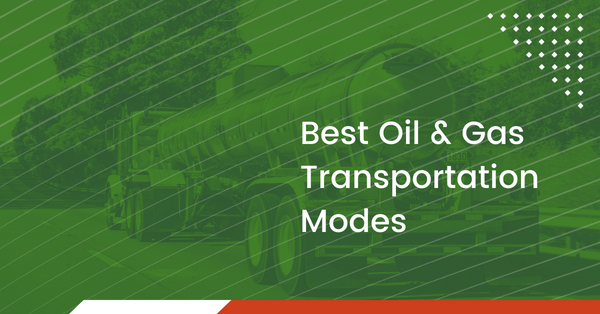Businesses and citizens rely on the oil and gas industry daily to supply the fuel that keeps the nation and daily life progressing. To provide necessary materials like oil and gas, companies must ensure they transport materials conveniently, safely, and safely. Along with a potent strategy, choosing a suitable transportation mode is crucial for efficient oil and gas shipping.
The role of transportation in the oil and gas industry
Transportation is a significant component of the oil and gas industry. However, due to the hazardous nature of the transported products, the execution of that transportation can be complicated. Crude oil, natural gas, and large drilling equipment require special handling and increased safety regulations. Therefore, cargo security, delivery speed, and proper transportation equipment play a significant role in the oil and gas supply chain.
Popular ways of oil and gas shipping
Energy companies use various oil and gas shipping modes to ensure successful delivery. Choosing the proper way can be challenging but vital.
Trucks
Trucking provides the oil and gas industry’s most accessible and utilized form of transportation. With over-the-road transit, you can schedule product shipments and transport them anywhere. This advantage makes trucking, perhaps, more beneficial than other transportation modes. Also, the risk of damage, such as cracks or leaks, is relatively small due to the low volume of oil carriers can transport.
Additionally, several types of trucks can perfectly suit the needs of the industry.
- Flatbeds allow you to move loads of any size and shape because of their open trailers. Rigs, pipes, and drilling equipment are usually oversized and overweight, which makes it difficult to move using any other transportation method except a specialized truck. You won’t have to worry about placing a large item into flatbeds since their space allows you to accommodate the objects without the threat of damage.
- Hotshots are trailers connected to a pick-up truck made for carrying small and urgent shipments. A hotshot is an ideal option whenever you need to transport a piece of equipment to a remote site quickly. You can also consider using hotshots in multimodal shipments when you need to deliver parts of your cargo to several destinations.
- Oil tankers are special cylindrical containers connected to trucks. While tankers usually move liquids, they are also capable of moving oil. Although you cannot ship a large volume of oil through the truck, the vehicle can take it to any destination you need.
Pipelines
This transportation method is relatively basic; oil is gathered and transported directly to the site or plant via a pipeline network. It is a fast and reliable way to distribute oil. New technology has also aided the advanced safety of this mode, with pipelines now equipped with sensors for monitoring important indicators like temperature and pressure.
Pipeline transportation does have its disadvantages. Shipping destination limitations exist due to the lack of pipeline infrastructure. Additionally, because pipelines move enormous amounts of oil, the resulting damage can be severe if an accident occurs.
Ocean
While typically used as one part of a sizeable intermodal strategy, ocean shipping is a slow but inexpensive, reliable way to move vast volumes of fuel. Tank vessels, typically used for ocean transportation of oil and gas, demonstrate high protection levels to prevent possible leaks. However, ocean delivery requires more time and additional labor due to the large size of these transportation units. Ocean transportation offers a significant advantage over other shipping methods to those transporting materials globally despite longer transit.
Rail
Rail transport had been the primary way to move oil for more than 150 years. Today though, it is best used in conjunction with other shipping methods to add transportation flexibility. Rail remains hugely beneficial as a fast and cost-effective way to move oil long-distance. It gets even more helpful when shipping oil and gas internationally since rail transportation is highly compatible with multimodal shipments. Rail oil containers are also less prone to damage compared to other shipping modes.
Oil and gas shipping with PLS Logistics Services
At PLS Logistics Services, we have more than 30 years of experience providing logistics services for oil and gas companies across North America. We understand the importance of choosing the correct mode of transportation and can enhance your business’s transportation strategy with our customized solutions, 55,000 carrier network, and various methods. Get a free oil and gas shipping quote today!


